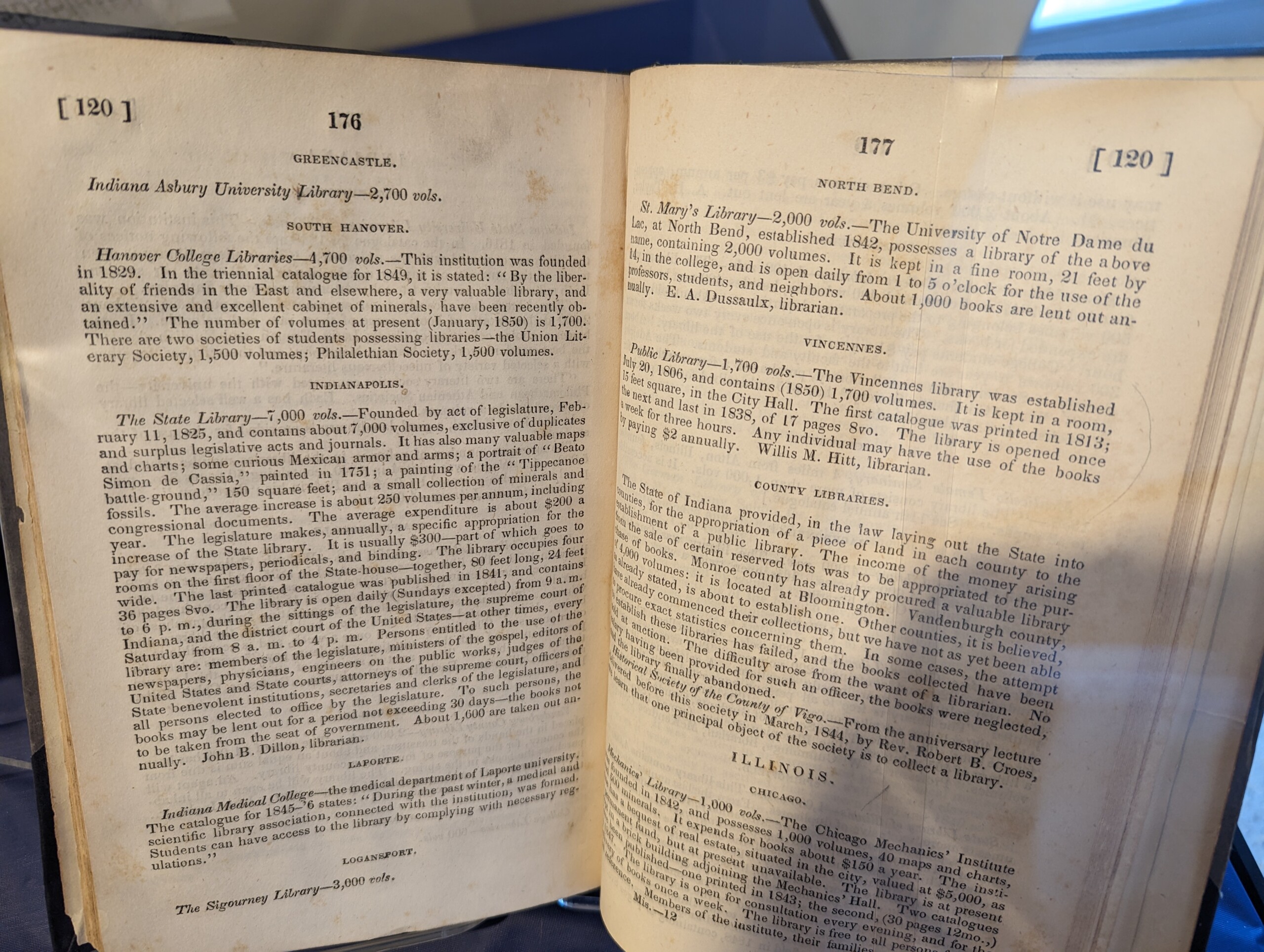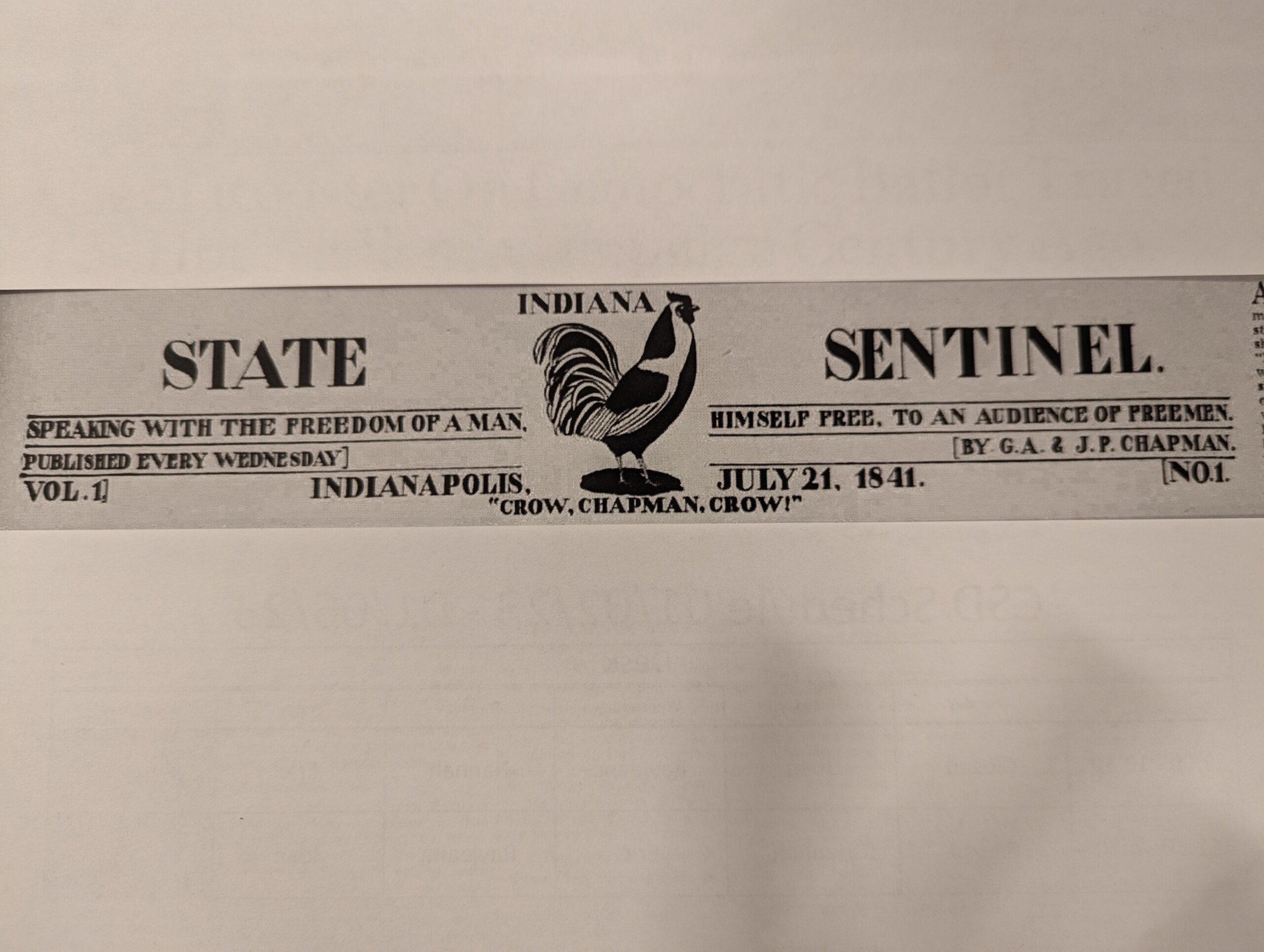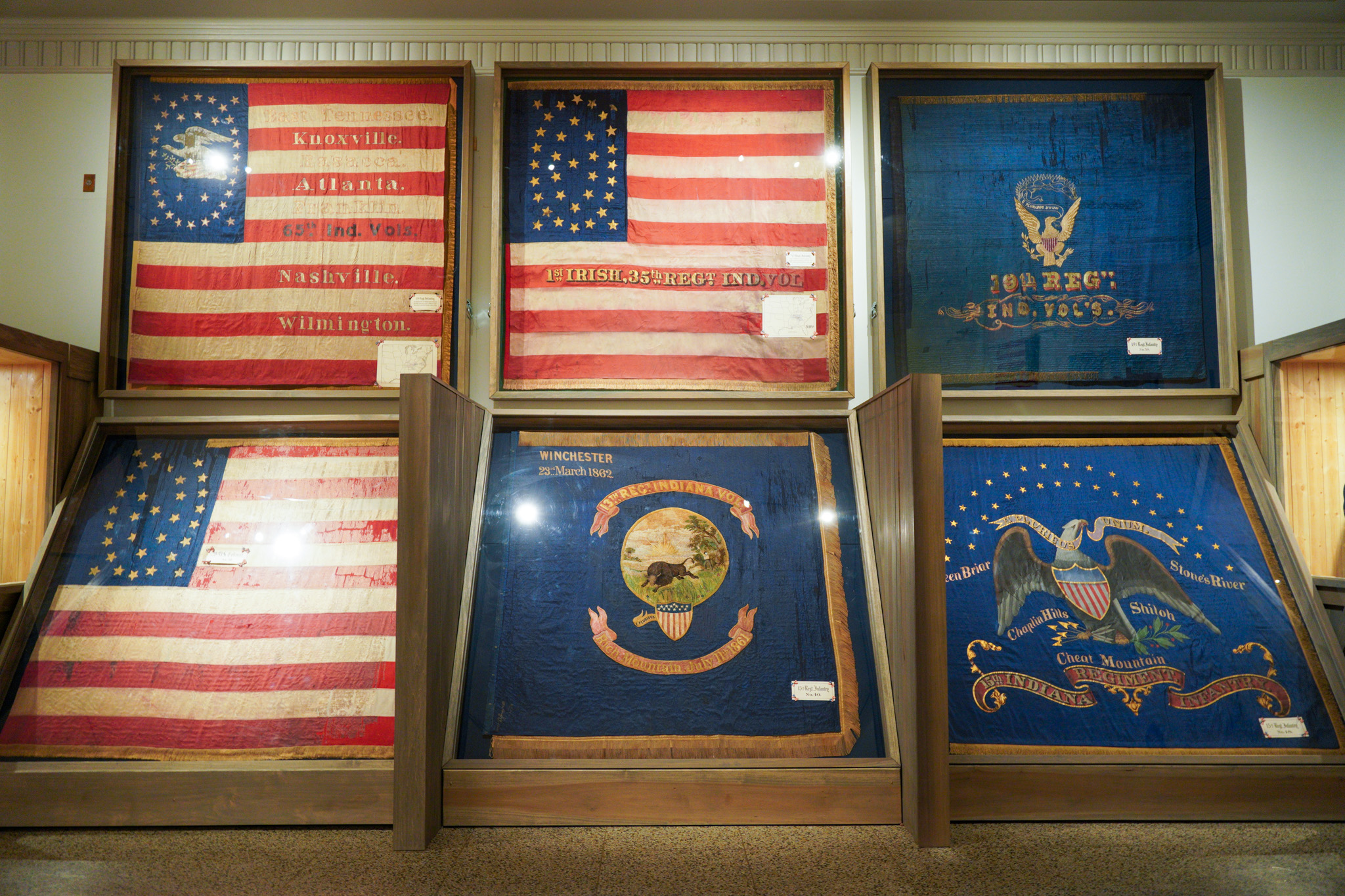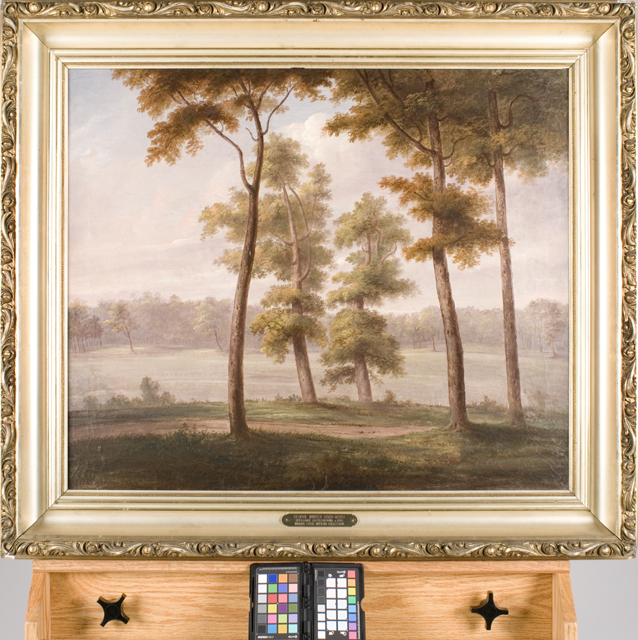Carl Becker once posited the query, what is a fact? In his famous essay, his answer included the following, “And generally speaking, the more renowned a historical fact is, the more clear and definite and provable it is, the less use it is to us in and for itself.” His observations have relevance today.
Consider the steps taken to verify information laid out in a brief paragraph written by the Smithsonian Institute – in response to a survey sent out in 1849 in an effort to “capture the state of public libraries in the United States” – as reported in its 1850 Annual Report.
 Included among those libraries that responded to the survey was the Indiana State Library, then consisting of four rooms on the first floor of the Indiana State House and opened daily, Sundays aside, from 9 a.m. to 6 p.m. As well as its 7,000 volumes, the library had “some curious Mexican armor and arms; a portrait of Beato Simon de Cassia, painted in 1751; a painting of the ‘Tippecanoe battle-ground;’ 150-square-feet; and a small collection of minerals and fossils.”
Included among those libraries that responded to the survey was the Indiana State Library, then consisting of four rooms on the first floor of the Indiana State House and opened daily, Sundays aside, from 9 a.m. to 6 p.m. As well as its 7,000 volumes, the library had “some curious Mexican armor and arms; a portrait of Beato Simon de Cassia, painted in 1751; a painting of the ‘Tippecanoe battle-ground;’ 150-square-feet; and a small collection of minerals and fossils.”
If those same items might intrigue patrons today, we shall never know. None still reside within our collection.
Take, for example, the portrait of Beato Simon de Cassia and the Mexican suit of armor. No mention of these items can be found in the library director’s report from 1850-1852. Yet, they are regularly referenced in the Daily State Sentinel, a contemporary and manically partisan newspaper. Indeed, the items became a sort of rope in the heated tug-of-war between the town Whig and the country Democrat politicians.

The Daily State Sentinel was owned by brothers George and Jacob Chapman, who weren’t without a sense of flair. The masthead of their paper carried an image of a Rooster, soon to become the symbol of the Democratic Party in Indiana, and the words, “Crow, Chapman, Crow.”
To understand how this came to be, a little background is needed. The portrait, suit of armor and a book – apparently of less interest – comprised a gift from one John S. Simonson, a military man with one foot firmly planted in Indiana, as his wife, Elizabeth Watson, hailed from Charlestown, and the other in a stirrup riding with the U.S. Mounted Riflemen. Before being elected to the position of Indiana’s Speaker of the House in 1845, Simonson had served one term as a state senator. Soon after his election to speaker, James K. Polk appointed Simonson Captain of the Mounted Riflemen, a post he held throughout the Mexican War. He played an integral part in the siege and capture of Vera Cruz and then spent the next many years fighting American Indians in Texas.
Papers suggest that Simsonson held a good opinion of himself, which might help explain how his gift to the state of Indiana became a point of contention for Indiana Democrats, who argued that Simonson’s gifts were plunder from an aggressive war. On Jan. 30, 1852, proceedings from the State House reveal that Mr. Sleeth, a Democrat, demanded that all material stolen from Mexico during the U.S. invasion be turned over to the local Catholic Cathedral. Mr. Holloway, a Whig, insisted the spoils remain, byproducts of the nation’s defensive war with Mexico. Similar discussions resurfaced, each time less heatedly, for decades, until 1885 when the portrait and book were quietly donated to a local Catholic church.
The fate of the painting of the Battleground at Tippecanoe is uncertain. In an Indianapolis Star article from December of 1929, Kate Milner Rabb laments the condition of a George Winter painting of the Battleground at Tippecanoe, languishing at the State Library. This plea for help appears to have gone unheeded. A painting of the Battleground at Tippecanoe by George Winter is referenced in a letter from the State Museum, in 1980, which explains that if the library transfers the painting of the Tippecanoe Battleground to the Museum, the Museum can then restore it. Might the below image from the State Museum Collection be the said work from the director’s report? We may never know.
While documentation has yet to be uncovered, it seems likely that the minerals and fossils from the early days also winded their way to the State Museum.
The Mexican suit of armor is still unaccounted for. It may have trotted off with a concerned legislator, found a home in a Catholic or a Mexican cultural institution or, perhaps, stands in in a closet, waiting to be found and traced back to Captain John Simonson?
Other matters are less shrouded in mystery. For instance, the state librarian – a job held by both men and women – was a busy person. Reports from the 1850s onwards chronicle a variety of pressing 19th-century duties. The perennial problem of keeping the library’s collection from walking away was dealt with in the 1850s by taking all books out of circulation. Theft was also discouraged by printing the names of delinquent patrons in the director’s report, with inconclusive results. Then, there was the daily foot traffic. Statistics from the librarian’s 1894 report indicate that 6,218 patrons read newspapers in the reading room.
Since the librarian maintained the Statehouse and grounds for a chunk of the century, their time could be consumed with non-librarian issues as well, such as how to care for the building when it became a military encampment during the Civil War.
And, what to do with the battle flags produced by Civil War regiments? After the flags were ordered to be returned to the State of Indiana by Lew Wallace, they moved around and were displayed in various places. Their time at the Statehouse was not without problems. By the 1880s, one librarian petitioned that the flags be given to either the Geological or Agricultural Department as “the library is no place for a collection of curiosities that draws visitors and creates noise and confusion.” Added to the librarian’s displeasure was the habit of patrons to “tear off bits for relics.” Eventually, the flags found a proper home at the Indiana War Memorial, where they were preserved, and a small percentage are on display.
 One senses, also, that the librarian’s needs were never at the top of the legislative agenda. A raise for the state librarian came eventually, near the end of the century, but not the oft-requested iron shelves, an interesting irony as fire prevention was a top priority when the State House was constructed.
One senses, also, that the librarian’s needs were never at the top of the legislative agenda. A raise for the state librarian came eventually, near the end of the century, but not the oft-requested iron shelves, an interesting irony as fire prevention was a top priority when the State House was constructed.
One may be dispirited to learn that records were not kept of the comings and goings of certain artifacts, but then one should be encouraged that the state librarian, despite a light salary and a heavy load, chose to answer the Smithsonian survey. As for what to make of the work undertaken to trace an array of objects listed in 1850 – work that included tours of the State House and War Memorial (trips both worth taking), time in the library’s own fourth-floor vault, correspondence with the registrar at the State Museum and an explanation for how the rooster came to represent the Democratic Party in Indiana – consider it a nod to Becker, proof that the value of a fact can be in its unraveling.
This blog post was written by Kate Mcginn, reference librarian, Indiana State Library.

